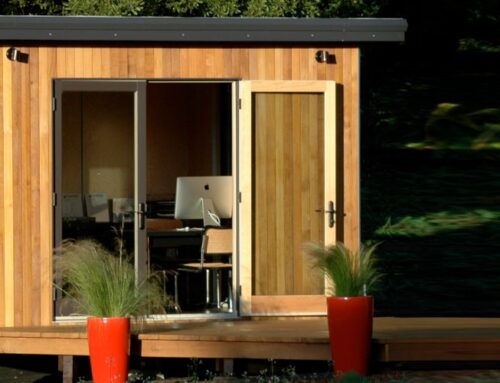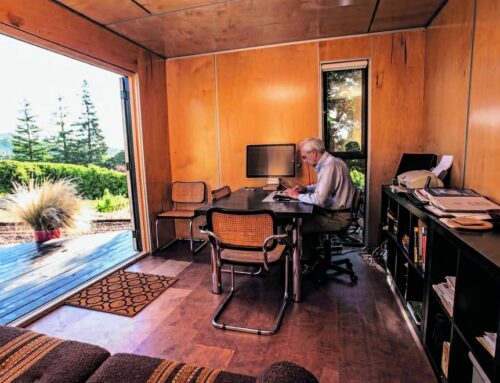The City of Brentwood has adopted a Municipal Code to cover ADUs (17.100.005 Accessory Dwelling Units)
An accessory dwelling unit is an attached or detached residential dwelling unit which provides complete independent living facilities. It includes permanent provisions for living, sleeping, eating, cooking, and sanitation on the same parcel as the single-family dwelling. (See Government Code Section 65852.2.) An accessory dwelling unit is ministerially permitted subject to all of the following:
A. General Requirements for All Accessory Dwelling Units.
- Application. The applicant must file an application for an accessory dwelling unit with the community development department and pay the fees currently in effect at the time the application is deemed complete.
- Zoning. The lot must:
- Be zoned for residential use;
- Comply with the required minimum lot area (including the open space, rear-yard requirements of Section 17.660.004); and
- Be improved with (or in conjunction with) a single-family residence.
There may be no more than one accessory dwelling unit per parcel.
- Sewer and Water. The lot on which the accessory dwelling unit is to be placed must be able to provide adequate sewer and water services for both the existing primary dwelling unit and the accessory dwelling unit as determined by the city engineer. Approval by the Contra Costa County Health Department is required if a private sewage disposal system or well system is being used.
- Recorded Restrictions. The owner must record an approved form of deed restriction setting forth both of the following:
- The primary residence and the accessory dwelling unit are on a single lot; the units cannot be sold separately in violation of the Subdivision Map Act. (See Title 18.)
- If the primary dwelling unit or the accessory dwelling unit is rented separately, the property owner must reside in the other unit.
B. Site Development and Design Criteria for All Accessory Dwelling Units.
- Design. The accessory dwelling unit must be designed in accordance with the criteria set forth in Chapter 17.820 (Design and Site Development Review). The accessory dwelling unit must be clearly subordinate to the primary dwelling unit on the parcel by size, location and appearance and must be constructed with materials and exterior finish consistent with the primary unit.
- Type of Unit. An accessory dwelling unit may be attached to the primary dwelling, located within the living area of the primary dwelling, or detached from the primary dwelling.
- Parking. One additional standard size, covered or uncovered, off-street parking space must be provided for the accessory dwelling unit (in addition to the parking requirements for the existing primary dwelling unit). The required parking space(s) must be in compliance with the city’s parking ordinance (Section 17.620.007(A)).
- Building and Fire Code. The accessory dwelling unit must comply with all building and fire code requirements. (See Title 15.) The accessory dwelling unit must have a permanent foundation. The city will require fire sprinklers for an accessory unit whenever they are also required for the primary unit.
- Utilities for a Detached Unit. A detached accessory dwelling unit may not have water and wastewater utility connections as an extension from the primary dwelling unit, except for: (a) accessory dwelling units established within a legal, existing detached structure with existing water and wastewater connections; and (b) county health department approved septic systems. Utility services may be extended from the private utility lateral, between the public utility main and the primary dwelling unit, or may be a separate connection to the public utility main. Applicants must follow the application procedures and pay all applicable charges, including any applicable security deposit, application fee, service connection charge, meter charge, service line charge, existing facilities charge, and any other charges as set forth in the cost allocation plan.
- Setback and Height. An accessory dwelling unit must meet all setback and height restrictions of the zoning district in which it is to be located. However:
- A detached accessory dwelling unit may not exceed a maximum height of fifteen feet, or be located any closer than five feet to a property line (measured to the closest point of the structure);
- No setback is required for an existing garage that is converted to an accessory dwelling unit, as long as the footprint of the garage is not increased;
- A five-foot setback from side and rear lot lines is required for an accessory dwelling unit constructed above a garage; and
- The distance between the primary and accessory dwelling units must be sufficient for fire safety, under Chapters 15.04 and 15.06.
- Floor Area.
- Attached Accessory Dwelling Unit. The floor area of an attached accessory dwelling unit may not exceed fifty percent of the existing living area of the primary unit, up to a maximum of one thousand two hundred square feet.
- Detached Accessory Dwelling Unit. The total floor area for a detached accessory dwelling unit is based on lot size and may not exceed either the following dimensions or thirty percent of the primary dwelling unit floor area (excluding garage and carport):
| Lot size (square footage) | Accessory dwelling unit Maximum square footage |
| Less than 6,000 | 400 |
| 6,001 to 10,000 | 800 |
| 10,001 to 20,000 | 1,000 |
| 20,001 and greater | 1,200 |
- Exception. Notwithstanding the standards in subsections (B)(1) through (7), the city will ministerially approve an application for a building permit to create within a single-family residential zone one accessory dwelling unit if the unit is contained within the existing space of a single-family residence or accessorystructure and: (a) the unit has independent exterior access from the primary residence; and (b) the side and rear setbacks are sufficient for fire safety, in the opinion of the chief building official.
C. Conditional Use Permit. If an application for an accessory dwelling unit does not meet all of the requirements listed under subsections A and B of this section, the applicant may file an application for a conditional use permit to seek approval of the unit.
D. Fees. Development impact fees for an accessory dwelling unit are as outlined in the city’s adopted master fee program as amended from time to time by resolution. (Ord. 991 § 1, 2017; Ord. 769 § 2(B) (Exh. A), 2004)



Leave A Comment
You must be logged in to post a comment.